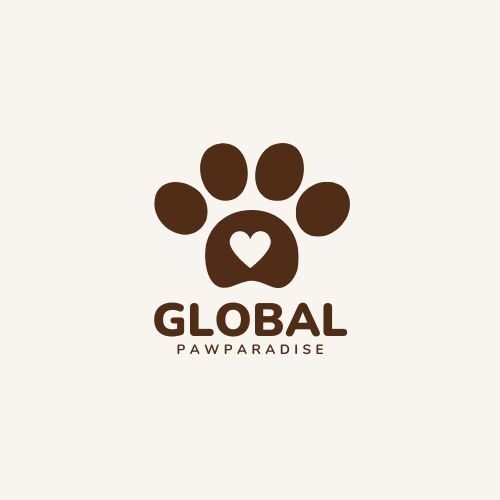Our furry friends bring endless joy and love into our lives. But let’s face it, sometimes those playful pups can track in dirt, develop tangles, or shed like a blizzard. Regular grooming is essential not just for keeping your dog looking their best, but also for maintaining their overall health and well-being.
The good news? You don’t need a fancy arsenal of tools to keep your dog spick and span. With a few key items and a consistent routine, you can transform grooming time into a bonding experience for both you and your canine companion.
In this guide, we’ll explore the 5 must-have grooming tools that will equip you to tackle any doggy dirt or fur issue:
Table of Contents
ToggleGrooming Tools for Your Dog
1. The Right Brush for the Job:
Not all brushes are created equal! The ideal brush for your dog depends on their coat type. Here’s a breakdown of the most common brushes and their uses:
-
Slicker Brush: This brush features fine, densely packed wires that effectively remove loose hair, dirt, and debris from all coat types. It’s particularly useful for double coats and for preventing matting.
-
De-Matting Rake: If your dog has a long or curly coat, a de-matting rake is a lifesaver. This tool gently breaks down mats and tangles without pulling on your dog’s fur.
-
Undercoat Rake: For dogs with thick undercoats, an undercoat rake removes excess fur before it sheds all over your furniture. This helps minimize shedding and keeps your dog cooler in warmer weather.
-
Grooming Comb: A comb with wide and fine teeth is a versatile tool for removing tangles, checking for fleas and ticks, and ensuring a smooth, finished look.
2. Gentle Shampoo and Conditioner:
Just like us, dogs benefit from occasional baths. However, frequent bathing can strip away natural oils from their skin. Choose a dog-specific shampoo that’s gentle on their skin and coat. Consider the following factors when selecting a shampoo:
-
Coat Type: There are shampoos formulated for dry, itchy skin, sensitive skin, or specific coat types like long hair or curly hair.
-
Odor Control: If your dog is prone to doggy smells, look for a shampoo with odor-neutralizing properties.
-
Natural Ingredients: Opt for shampoos free of harsh chemicals and with natural ingredients like oatmeal or aloe vera that can soothe and nourish your dog’s skin.
3. Nail Clippers or Grinder:
Long nails can be uncomfortable for your dog and can even damage your floors or furniture. Regular nail trims are crucial. Here are two options for keeping your dog’s nails in check:
-
Nail Clippers: Choose clippers specifically designed for dog nails. They come in different sizes to suit the size of your dog. If you’re not comfortable clipping your dog’s nails yourself, consider asking your veterinarian or a professional groomer for help.
-
Nail Grinder: A nail grinder is a rotary tool that gradually shortens your dog’s nails. It can be a good option for dogs who are anxious about nail clippers.
4. Ear Cleaning Solution and Cotton Balls:
Regular ear cleaning helps prevent ear infections, a common problem in some dog breeds. Use a dog-specific ear cleaning solution recommended by your veterinarian. Here’s how to safely clean your dog’s ears:
- Apply solution to cotton balls.
- Gently clean the outer ear canal. Avoid inserting the cotton ball deep into the ear canal.
- Repeat with a clean cotton ball for each ear.
Read : Best Flea and Tick Dog Shampoo
5. Microfiber Towel and Slicker Brush (Post-Bath):
After bath time, use a microfiber towel to gently remove excess water from your dog’s fur. Microfiber towels are absorbent and won’t damage your dog’s coat. You can then use a slicker brush to detangle any fur and promote drying.
Bonus Tip: Deshedding Tools
For heavy shedders, a deshedding tool can be a game-changer. These tools come in various forms, like brushes or gloves, and are designed to remove loose fur before it sheds around your house.
Remember:
- Grooming Frequency: The frequency of grooming needed will vary depending on your dog’s breed, coat type, and lifestyle. Consult your veterinarian for a personalized recommendation.
- Positive Reinforcement: Make grooming time a positive experience by using plenty of praise and treats.
- Start Early: Introduce your dog to grooming tools and techniques from a young age to get them comfortable with the process.
FAQ for 5 Must-Have Grooming Tools For Your Dog
- What is the best brush for my dog’s coat type?
Use a slicker brush for long-haired breeds, a bristle brush for short coats, or a deshedding tool for heavy shedders. - How often should I use nail clippers on my dog?
Trim your dog’s nails every 3-4 weeks or when you hear clicking on hard floors. - Are dog-specific shampoos necessary?
Yes, dog shampoos are formulated for their skin’s pH balance and prevent irritation. - How do I safely clean my dog’s ears?
Use a vet-approved ear cleaning solution with soft cotton pads, avoiding deep insertion. - What is the purpose of grooming scissors?
Grooming scissors are essential for trimming around sensitive areas like paws, ears, and eyes.



